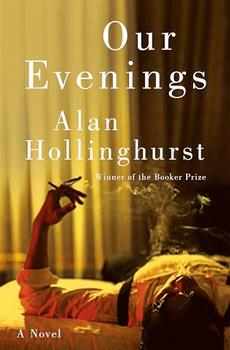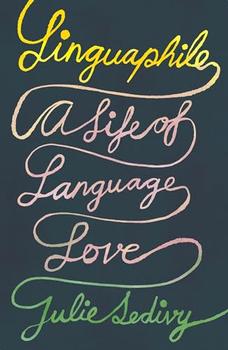
Patti Callahan Henry discusses her historical fiction novel, The Secret Book of Flora Lea, and how her owncuriosity - and childhood - led her to write this compelling book.
You speak in the author's note about your discovery of Operation Pied Piper—a piece of history lost to time for many people. Were there other bits of history you discovered in your research for this novel?
Before I started writing this novel, I knew that British children had been sent to the country during World War II for their safety, but I'd been unaware of its operational name. As I dug a little deeper, curious about the impact of exile on the children of war, I discovered that this scheme had been given the title of a German legend about a piper who lures children away from their homes and town. Those children were never seen again. As I read and conducted my research, I wondered this: Why would the British government name a scheme to keep children safe after a legend of lost children? Curiosity often leads me to story, and this time was no different. Children weren't just sent to the country—they were also sent to America, Australia, and Canada by ship (sometimes with fatal results). WWII is full of untold stories, and in The Secret Book of Flora Lea I try to bring some of the Operation Pied Piper tales to light—from the small facts about how children sat in town halls while hearing the ringing voices of "I choose this one" to the larger narrative of bombings and exile. I wanted to know about the children's experiences of this time, and Hazel and Flora Lea were the ones to tell it.
You've written both contemporary and historical fiction novels. What do you enjoy most about writing historical fiction?
The thing I love most about historical fiction is the thing that thrills me about any research, which is finding the one small fact that gives me pause, that causes a tingle at the back of the neck, that tells me there is something more to the story. I love finding a line or an event or a lost voice that changes what I think I know about a story, that flips the known narrative on its head, and that brings me to new understanding of a time, a person, or an event. I once heard this phenomenon described as "emancipating the truth" and I think about that phrase over and over as I do my research: How can I bring a fuller or more interesting truth to this story?
The Secret Book of Flora Lea is set in dual time periods and places—the World War II English countryside and 1960s London. Did you know from the start that those would be the settings for this book?
I only knew a few things when I sat down to write this novel: that the story would be impacted by Operation Pied Piper, that there would be two sisters who loved each other dearly, and that the older sister would create a fairy-tale world for just the two of them when they are sent away from home. The rest of the novel grew from those seeds. As I made my way into the story and placed it in the landscapes I love (London, Oxford, Binsey, and Cape Cod, Massachusetts) the settings and time fell into place. 1939 is the year of Operation Pied Piper and 1960s London is a fascinating period in history, and I wanted both the city and Hazel to be on the cusp of great change.
This book is a real ode to storytelling and how we can carry it with us for years. Are there particular books or stories from your childhood that you carry along as an adult?
The everlasting refrain from my childhood was this: "Get your nose out of that book and join us." I loved books, the library, stories, and other worlds. I believe we are made from bits and pieces that stick to us, and for me, a lot of those bits are made of books I read. If I'm to choose the most influential from childhood they would be The Chronicles of Narnia, the Little House on the Prairie series, Nancy Drew, Old Yeller, and Little Women. It's an odd combination of influence, but somehow, they all seem to define my childhood reading in a time capsule.
What are some of your favorite places or things to pull from for inspiration when writing a novel?
Inspiration is mysterious, elusive, and refuses to be looked at directly in the eye. I try not to pin it down for fear that it will never visit me again! But I do know that inspiration comes when I stay curious. I often write about the origins of stories, and as you'll read in The Secret Book of Flora Lea, there is the overarching question of "Where did Whisperwood come from? What are its origins?" If I notice something, or my curiosity is peeked, there is usually a story hidden inside that framework. My work is inspired by poetry (as evidenced by the Mary Oliver poem at the start of this novel), by nature, and by reading, conversations, and dreams. In other words, my work is inspired by anything and everything that gives me a little tingle of wonder. When I pay attention, the world offers me small and large moments of inspiration. When I traveled to England for research, I had so many moments of synchronicity around the characters and setting that's it is entirely possible for me to believe that the story was working with me to appear in the world as a novel. Now, that is inspiring.
The relationship of Hazel and Flora weaves a beautiful thread about sisterhood. Were there certain elements of sisters you felt were essential to this story?
Sisterhood is complicated—I know; I am the oldest of three—and I wanted to show the tug and pull of both loving closeness and the need for independence that is often inherent in sibling relationships. While Hazel loves and feels responsible for her little sister, as she creates a fairy-tale land for just the two of them, but as she shares a bed in the small cottage, she also yearns for something of her own. This dissonance leads to what she believes is a terrible mistake, and her sister disappears, preserving Flora Lea as a six-year-old in Hazel's mind instead of the woman she might have become. I wanted to explore all those facets of being an older sister: the reality versus the fantasy, the imagining versus the reality, and the guilt that follows Hazel into adulthood, keeping her from her true aspirations until she knows the truth.
You're a founding member of Friends and Fiction with authors Mary Kay Andrews, Kristin Harmel, and Kristy Woodson Harvey. How has being a part of that group informed your path as a writer?
We founded Friends and Fiction during the pandemic when all our book tours had been cancelled. We were worried about how to reach our readers, ones we wouldn't see on tour. We were lonely and locked down, and we were concerned about bookstores. This led to a Zoom gathering where we talked, brainstormed, laughed, and shared our lives and work. It was Mary Kay Andrews who said, "Let's take this conversation live on Facebook." And that was the beginning of an unintended and extraordinary journey, and the seed of one of the most vibrant communities on the internet and now in the real world: a reading community of well over a hundred thousand members on Facebook, a show on YouTube, a podcast, a book club, and now live events. With weekly author interviews, this show and community has changed our lives. We are part of something so much bigger than ourselves, and we know how important it is for writers, readers, librarians, booksellers, and published authors. As for how it has informed my path as a writer? I know that my writing life isn't just about my story or my work, but instead it is an integral part of a thriving literary community.
What inspired you to write a novel centered around a bookstore? In what ways did this aspect of the narrative contribute to how the story unfolded?
I knew that a book of illustrated fairy tales solves the mystery of Flora Lea's disappearance. I didn't know what those answers would be, but I knew they'd be exposed by this book's existence. So what better place for Hazel to find this book than in the very bookstore where she works? I am also fascinated by the idea of a "shadow artist"—meaning someone who works adjacent to the work they want to do but area somehow blocked from doing. Hazel wants to write stories again. She hoards notebooks and works in a bookshop, but she also believes that the story she created took her sister. I wanted her to heal from that guilt. And then on a personal note, bookstores and libraries have been, as for most of us, sanctuaries. This novel is partly an ode to stories and bookstores, to their power and their importance, and so I created a bookstore I'd want to work in, one that you, the reader, would want to visit.
Unless otherwise stated, this interview was conducted at the time the book was first published, and is reproduced with permission of the publisher. This interview may not be reproduced or reprinted without permission in writing from the copyright holder.




Some books are to be tasted, others to be swallowed, and some to be chewed on and digested.
Click Here to find out who said this, as well as discovering other famous literary quotes!
Your guide toexceptional books
BookBrowse seeks out and recommends the best in contemporary fiction and nonfiction—books that not only engage and entertain but also deepen our understanding of ourselves and the world around us.